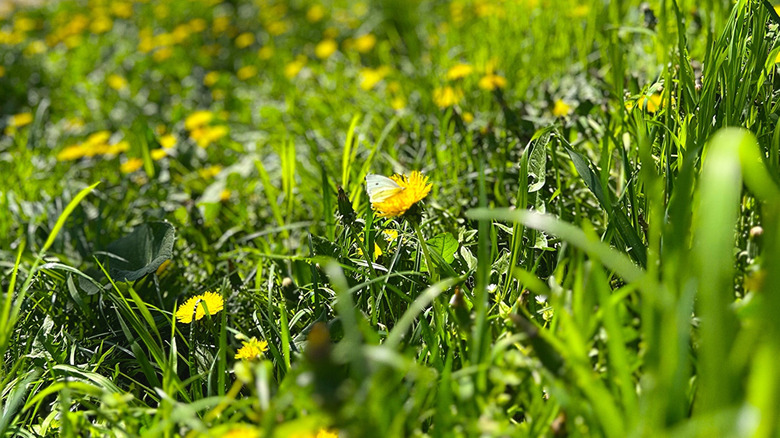Do The Benefits Of Having Dandelions In Your Yard Outweigh The Downsides?
To many homeowners, dandelions (Taraxacum officinale) are the yellow scourge of a well-manicured yard, and it's hard to imagine that there are any benefits to having them around. Seen as an annoying weed, these hardy perennials may deserve more appreciation than they get. While they can spread quickly and disrupt turfgrass, dandelions also provide food for pollinators and help improve soil health. The benefits of having dandelions in your yard can outweigh the downsides, especially when you're looking to prioritize ecological balance and biodiversity in your garden.
These plants typically clash with pristine lawn ideals, which is why many homeowners want to stop dandelions from taking over their yard or garden. However, dandelions offer plenty of ecological value thanks to their natural pest control and role in supporting a biodiverse garden. For those curious about the dandelions in their yard that aren't in their neighbor's, there's plenty to explore in the overlooked life of this common lawn plant.
How to use dandelions to improve soil and support wildlife
Dandelions do more than just brighten a lawn with bursts of yellow, and a yard full of dandelions can mean a lot about your lawn's condition. Dandelions have deep taproots that can reach down as far as 24 inches, helping to aerate compacted soil and pull up nutrients like calcium from deeper layers. Though dandelions thrive in soils that are rich in nitrogen and potassium, it's not unheard of to see them growing out of gravel and from in-between cracks in concrete. They are hardy in every sense of the word; the feral flowers of the plant world.
They offer surprising value to backyard ecosystems. Dandelions bloom early in spring, and this makes them essential for early-emerging pollinators such as bees and butterflies. Encouraging small patches of dandelions to grow can help support declining insect populations. To control their spread without sacrificing ecological benefits, homeowners should isolate dandelion-friendly zones with physical borders because pulling dandelions or mowing them does not work to control them unless you get to the taproot.
Even when their seeds float freely through the air, dandelions remain useful to wildlife. Once their seedheads form, birds may feed on them as well as insects. Managing dandelions doesn't mean removing them entirely — instead, consider using mulch to restrict their growth by blocking their access to the sun in certain areas of your garden. This compromise supports pollinators while maintaining a tidy, intentional look to your yard.

